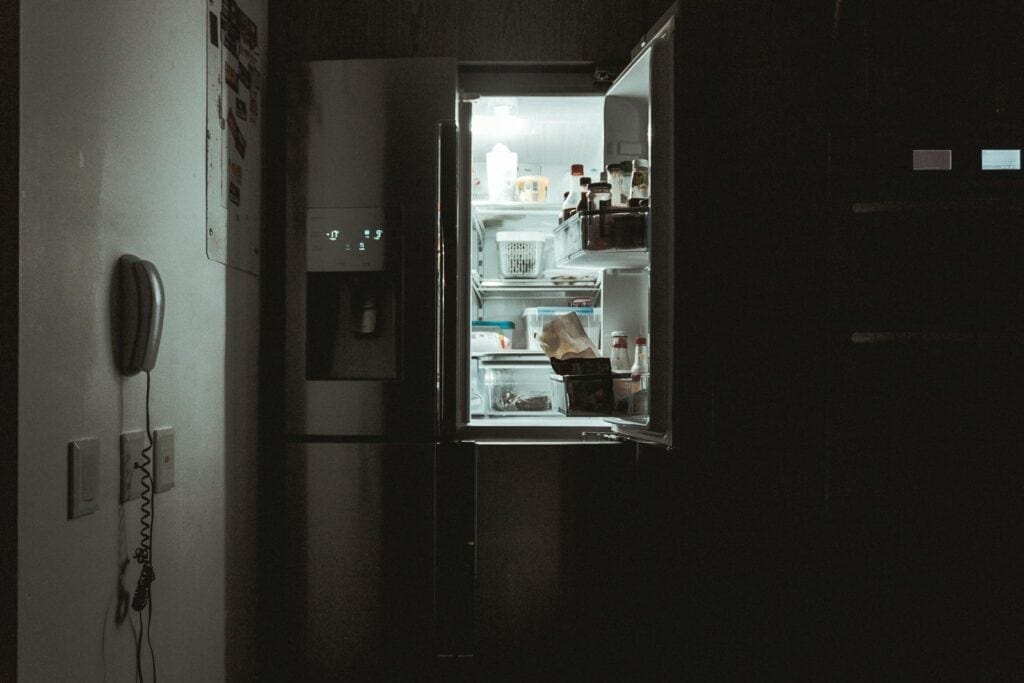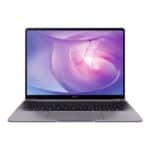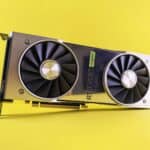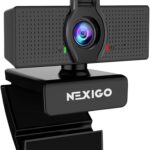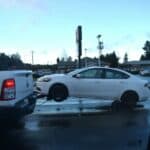It can be puzzling when your freezer works fine but your fridge fails to keep your food cold. This article aims to help you understand why this happens and how to resolve it. We will discuss various reasons, from airflow issues to faulty parts, so that you can identify and fix the problem.
This will help in ensuring the safety and quality of your food. Dealing with a fridge that is not cooling while the freezer is working properly can seem challenging. However, comprehending the role of the defrost system and its components is crucial for diagnosing and resolving the issue.
By checking for ice buildup, inspecting the defrost heater and thermostat, and evaluating the timer or control board, homeowners can often identify the problem. Addressing faults in these areas will help restore the fridge’s cooling function, ensuring that food remains fresh and safe. Remember, a functional defrost system is essential for a fully operational refrigerator.
Freezer Is Working But The Fridge Is Not
When your freezer is humming along happily but your fridge is feeling more like a lukewarm storage unit, there are a few common culprits to investigate.
- Check the Thermostat: The thermostat controls the temperature in both the fridge and freezer, but sometimes it can malfunction and cause one compartment to be warmer than the other. Make sure your thermostat is set to the correct temperature, usually around 37°F for the fridge and 0°F for the freezer. If adjusting the thermostat doesn’t solve the problem, you may need to replace it.
- Inspect the Door Gaskets: The gaskets around your fridge and freezer doors create a tight seal to keep the cold air in and the warm air out. If the gaskets are worn, cracked, or dirty, they might not be sealing properly, allowing warm air to leak into the fridge and raise the temperature. Check the gaskets for any signs of damage or debris and clean them thoroughly. If they’re damaged, you’ll likely need to replace them.
- Clean the Condenser Coils: The condenser coils are located on the back or bottom of your fridge and help release heat from the refrigerant. If these coils are covered in dust or pet hair, they won’t be able to dissipate heat effectively, leading to a warmer fridge. Unplug your fridge and carefully clean the coils with a vacuum or brush.
- Check the Evaporator Fan: The evaporator fan circulates cold air throughout the fridge. If the fan motor is faulty or the fan blades are obstructed, the cold air won’t reach the fridge compartment properly. Listen for the fan running and check for any obstructions. If the fan isn’t working, you might need to replace the fan motor.
- Defrost Drain Issues: Sometimes, the defrost drain can become clogged with ice or debris, preventing proper drainage and causing water to leak into the fridge compartment. This can lead to warmer temperatures in the fridge. Locate the defrost drain, usually at the back of the freezer, and clear any blockages.
If you’ve tried these troubleshooting tips and your fridge is still not cooling, it’s best to call a qualified appliance repair technician. There might be a more complex issue with the compressor, refrigerant, or other components that require professional attention.
Troubleshooting Steps
| Step | Action |
|---|---|
| 1 | Check for basic issues: – Ensure doors are properly closed and sealed. – Make sure temperature settings are correct and haven’t been accidentally adjusted. – Remove any overflowing or blocking items that might hinder airflow within the fridge. |
| 2 | Clean the condenser coils: – Locate the coils (usually on the back or bottom of the fridge, consult your manual if unsure). – Unplug the fridge and vacuum the coils with a brush attachment to remove dust and debris. – Clean the coils with a coil cleaning solution or warm, soapy water (refer to your manual for specific instructions). – Dry the coils completely before plugging the fridge back in. |
| 3 | Inspect the evaporator fan: – The evaporator fan circulates cold air within the fridge. Locate it (usually in the freezer compartment) and check if it’s spinning freely and unobstructed. – If not, unplug the fridge and carefully clean the fan blades. |
| 4 | Test the thermistor: – The thermistor is a temperature sensor that sends signals to the fridge’s control board. – Testing the thermistor usually requires a multimeter and specific steps, consult your fridge’s manual or seek professional help if needed. |
| 5 | Check the damper control: – The damper controls airflow between the freezer and fridge sections. – Look for the damper vent (usually near the top of the fridge compartment) and feel for cool air coming out. – If no cool air is present, the damper might be stuck or faulty, consult your manual or call a professional for further assistance. |
| 6 | Seek professional help: – If none of the above solutions work, it’s recommended to call a qualified appliance repair technician to diagnose the problem and perform any necessary repairs. |
Important Note: Always unplug your refrigerator before attempting any cleaning or maintenance procedures.
Key Takeaways
- Make sure the air can flow from the freezer to the fridge. If the vents are blocked, the fridge won’t cool well, even if the freezer is working.
- Check the fan that moves cool air from the freezer to the fridge. If it’s not working or if it’s blocked by ice, the fridge may warm up.
- Check that the defrost system is working. If it isn’t, ice can build up and block the cool air from getting into the fridge.
- Check the temperature settings. The fridge should be set between 37°F and 40°F to cool properly.
- Regularly check the air flow paths, the evaporator fan, and the defrost system to prevent future cooling problems. Fixing these things early can often prevent the need for professional help.
Common Reasons for Freezer Working But Fridge Not Cooling
When facing the peculiar issue of the freezer functioning perfectly while the fridge fails to keep items cold, several factors might be at play. Understanding these can assist in diagnosing and addressing the problem quickly.
Firstly, airflow restriction is a primary culprit. The cooling air that keeps the fridge at its optimum temperature often comes from the freezer unit. If something blocks this airflow—like piled up food or frost—then the fridge won’t cool properly. It’s important to check for any obstructions and ensure the vents are clear.
Secondly, a faulty evaporator fan could cause problems. This fan is responsible for circulating cool air from the freezer to the fridge. If it’s not working, the fridge won’t receive its share of cold air. Listening for unusual noises or silence from the fan area can help determine if there’s an issue.
Additionally, a malfunctioning defrost system might be to blame. A buildup of ice on the evaporator coils in the freezer can prevent air from moving into the fridge section. When the defrost system isn’t working as it should, ice accumulates quickly, leading to cooling problems.
Lastly, the thermostat or temperature control plays a crucial role. If it’s set incorrectly or failing, it won’t command the fridge to cool down as needed. Checking and adjusting the thermostat settings might resolve the issue.
By pinpointing these common causes, homeowners can take steps toward troubleshooting and potentially fixing their fridge’s cooling problem without immediate professional intervention. Regular maintenance and periodic checks of these components can prevent future occurrences, ensuring both the fridge and freezer perform optimally.
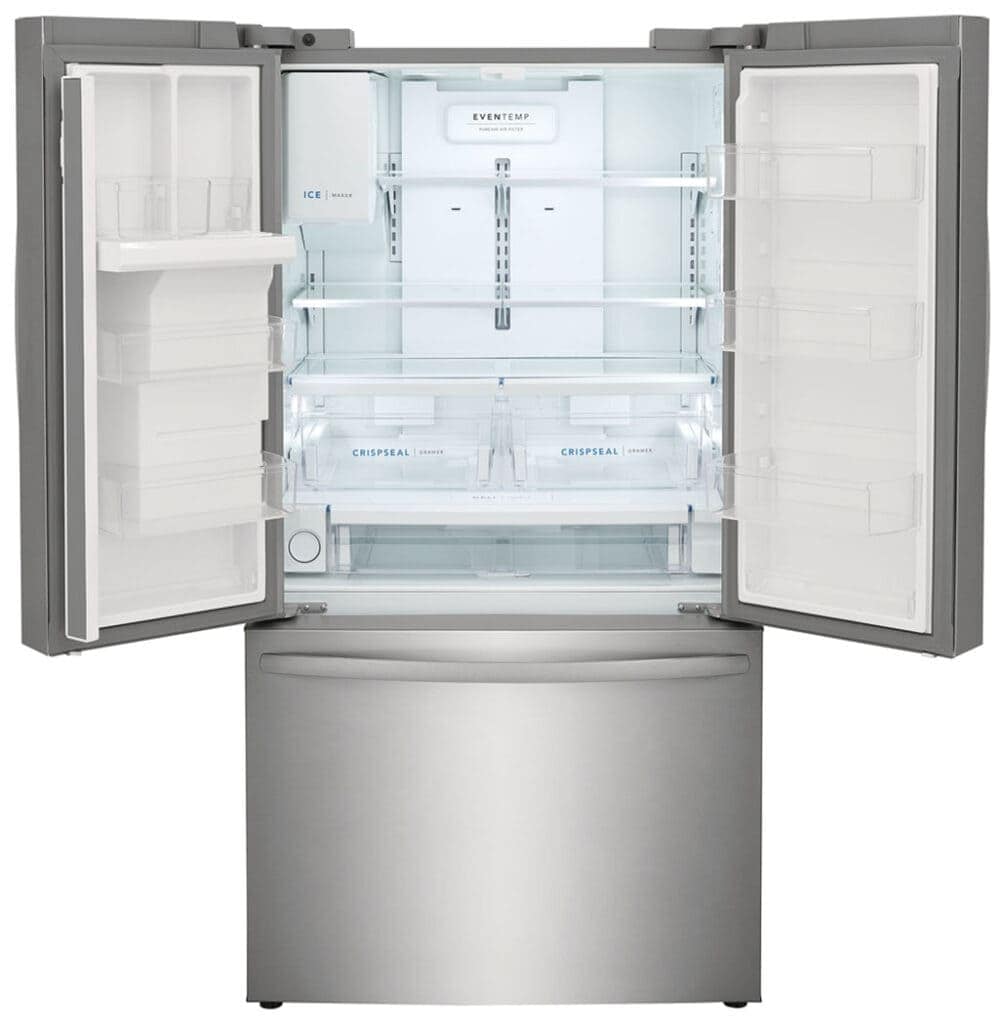
Checking the Temperature Settings
When the freezer works but the fridge doesn’t, it’s crucial to check the temperature settings. Sometimes, the issue is as simple as the settings being off. Fridges should typically be set between 37°F and 40°F. If the temperature is set higher, the fridge might not cool properly.
To adjust the temperature, find the control dial or digital panel inside the fridge. It’s often located at the top, or near the front. Turn the dial down or adjust the setting to lower the temperature. After making adjustments, give the fridge a few hours to change temperature.
It’s also smart to check if the temperature setting accidentally got changed. Things like cleaning the fridge or putting away groceries can sometimes knock into the controls.
If the temperature was correct but the fridge is still not cooling, there are other steps to take. The problem might be with the fridge’s ability to circulate cold air, rather than the settings themselves.
Evaluating Airflow Blockages
When the freezer hums along fine but the fridge below seems lukewarm, air flow might be the culprit. Fridges rely on a steady stream of cold air from the freezer. If something blocks that flow, the fridge warms up. It’s like when one lane of a highway closes. Traffic slows down. The same happens with cold air trying to get to your fridge.
First, check for simple blocks. Sometimes, food packages in the freezer get in the way. They can block vents, stopping cold air from moving down. Move these items and see if it helps. This step is easy but can solve the problem right away.
Next, look at the back of the fridge. There’s a fan there in most models. This fan moves air from the freezer to the fridge. If it’s not working, the fridge won’t cool properly. Sometimes, dust and pet hair can clog the fan. Cleaning it might get things moving again. But, if the fan’s broken, it might need replacing.
Also, consider defrost issues. Built-up ice can block air paths. Modern fridges usually defrost themselves. But, older models or faulty ones might not. They might need a manual defrost. Turning it off for a while lets the ice melt. This can clear the blockage and get air moving again.
Checking these areas can uncover air flow problems. It’s worth checking before calling for help. Often, these steps can fix the issue without needing a repair person.
Inspecting the Evaporator Fan
When the freezer is cold but the fridge is not, the evaporator fan could be to blame. This fan moves cold air from the freezer into the fridge. If it stops working, the fridge warms up. The following steps guide through checking the evaporator fan.
First, locate the fan. It’s usually at the back of the freezer section. Next, check if it’s running. One should hear it when the freezer door is shut. If there’s silence, the fan might be off or broken.
Ice buildup can block the fan. If ice is the culprit, defrosting is necessary. Turn off the fridge and let the ice melt. This might solve the problem without needing a replacement.
Another point to consider is the fan blades. Turn the fridge off and manually spin the fan. If it doesn’t spin freely, there may be an obstruction, or the motor could be failing.
Here’s a quick checklist:
- Locate the evaporator fan behind the freezer
- Listen for the fan when the door is closed
- Check for ice buildup and defrost if necessary
- Test the fan blades by spinning them manually
If after these steps the fan isn’t operational, a new fan might be needed. Unlike other fridge issues, replacing an evaporator fan requires a bit of know-how. If not confident, seeking professional help is the best route.
Potential Issues with the Defrost System
When the fridge part of a combo isn’t cooling but the freezer is fine, it’s time to look at the defrost system. This system melts away any ice that forms on the evaporator coils. Too much ice means not enough cold air reaches the fridge.
First up, the defrost heater. This part warms up to melt ice. If it’s not working, ice doesn’t melt. The quick test? See if there’s a lot of ice on the coils. If yes, the heater might be the problem.
Then, the defrost thermostat. It tells the heater when to turn on and off. If it’s faulty, the heater won’t work right. The way to check it involves some technical steps, so you might want a pro to take a look.
Don’t forget the defrost timer or control board. These parts decide when the defrost cycle runs. If they’re not doing their job, the system won’t defrost at all. The timer can be manually advanced to test, but the control board needs a more expert approach.
- Check the evaporator coils for ice build-up.
- Inspect the defrost heater and thermostat for issues.
- Look into the timer or control board functions.
Ultimately, if these components aren’t working, cold air can’t get to the fridge part. Getting them checked and fixed as needed can help get everything back to normal.
Frequently Asked Questions
Why is the refrigerator section not cooling while the freezer works fine?
The main reason could be issues with the defrost system that prevents the evaporator coils from defrosting. Ice buildup restricts airflow to the refrigerator section, causing cooling problems.
What is the role of the defrost system in a refrigerator?
The defrost system melts ice and frost from the evaporator coils, ensuring unobstructed airflow through the refrigerator and freezer for optimum cooling efficiency.
What are the key components of the defrost system?
The defrost system mainly consists of the defrost heater, the defrost thermostat, and the timer or electronic control board, each playing a crucial role in the defrosting process.
How can I troubleshoot cooling issues related to the defrost system?
Start by checking for ice buildup on the evaporator coils. Then, inspect the defrost heater and thermostat for faults, and evaluate the timer or control board for proper operation.
What should I do if I find a malfunction in one of the defrost system components?
Identify which component is faulty and replace it. It’s essential to address any malfunction to ensure the defrost system works correctly and restores proper cooling to the refrigerator section.

